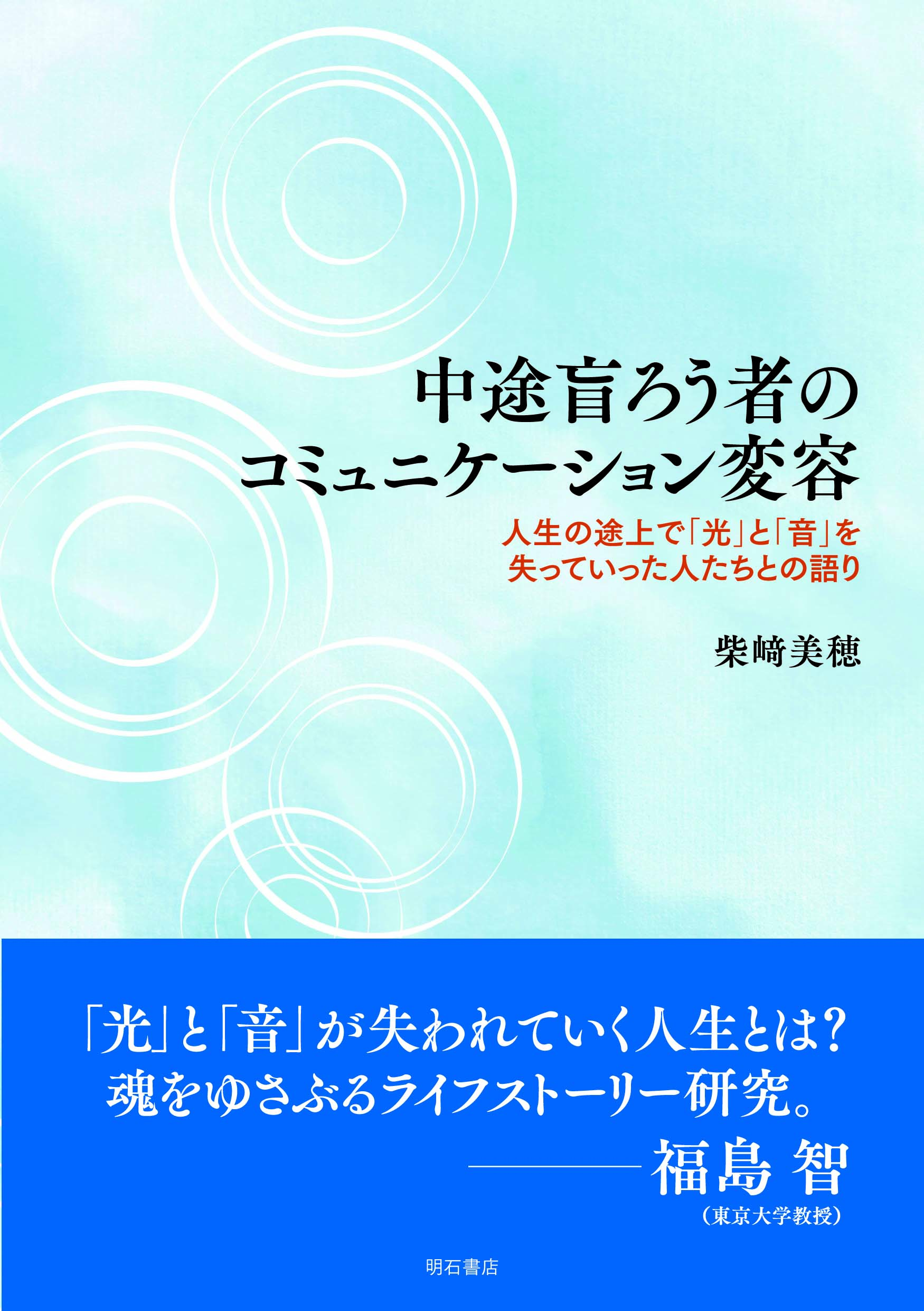
Title
Chūto Mōrōsha no Komyunikēshon Henyō (Communication issues of acquired deafblindness - Dialogues with people who lost their sight and hearing later in life)
Size
344 pages, A5 format
Language
Japanese
Released
June 10, 2017
ISBN
9784750345314
Published by
Akashi Shoten
Book Info
See Book Availability at Library
Japanese Page
People with deafblindness are people who have visual and hearing disabilities. The author has sought out just such people, compelled to hear the stories of people with acquired deafblindness.
This book is the outcome of life story studies based on the author’s doctoral thesis submitted to the University of Tokyo in March 2016. The thesis was titled, “Research on the communication issues of people with acquired deafblindness.”
The author begins with life story interviews of three people with acquired deafblindness. She then goes on to discuss those stories with other people with acquired deafblindness, and finally with Professor Fukushima Satoshi, who also has acquired deafblindness, is a researcher, and is the author’s supervising professor for her doctoral thesis. The author, who is not herself deafblind but was eager to understand the experiences of people with deafblindness, arrived at this three-tiered, multilayered approach after much trial and error. The reference to “dialogues” in the book’s subtitle is intended to show how this research has been based on an interactivity born of dialogue.
The objective of this book is to arrive at an understanding of the changing phases of communication for people with acquired deafblindness by exploring their personal and subjective experiences, and to examine how these changes have affected their lives.
In Chapter 1, the author gives an overview of prior research on people with disabilities including deafblindness, notes problems that remain to be addressed and explains the objectives of this book.
In Chapter 2, the author explains her three-tiered approach with step 1 involving interviews of three people with deafblindness, step 2, discussions with other people with deafblindness, and step 3, a final dialogue with Fukushima Satoshi. This chapter is where the originality of the author’s approach is most clearly evident.
Chapters 3 to 5 cover the life stories of the first three interviewees. Each of these chapters is devoted to the life story of one of the three persons with deafblindness and examines the role of communication in that person’s life. Each person’s life experiences are highlighted by the way they are presented in the interviewee’s own words.
Chapter 6 presents the author’s discussions with other people with deafblindness on the life stories of the original three interviewees. This chapter provides further interpretations of the first three life stories from the different perspectives of other people with deafblindness and explores the issues of communication that are the focus of the book.
Chapter 7 presents the joint findings of the author and her supervising professor by adding the perspective of Fukushima Satoshi, who is not only deafblind himself but also a researcher on the subject, thereby adding another layer in the author’s multilayered approach.
In the last Chapter 8, the author concludes the book with an examination of the changing issues of communication for people with acquired deafblindness and how those issues have affected their lives.
The life stories reiterated in chapters 3 through 5, and the dialogues presented in chapters 6 and 7 are the core of this book. It is the author’s hope that the direct words of people with deafblindness and the dialogues that follow will help the reader to deepen their understanding of deafblindness, while the concept of “communicational orientation” presented in Chapter 8 may provide hints for better communication among a broad range of people.
(Written by: SHIBASAKI Miho / March 27, 2020)



